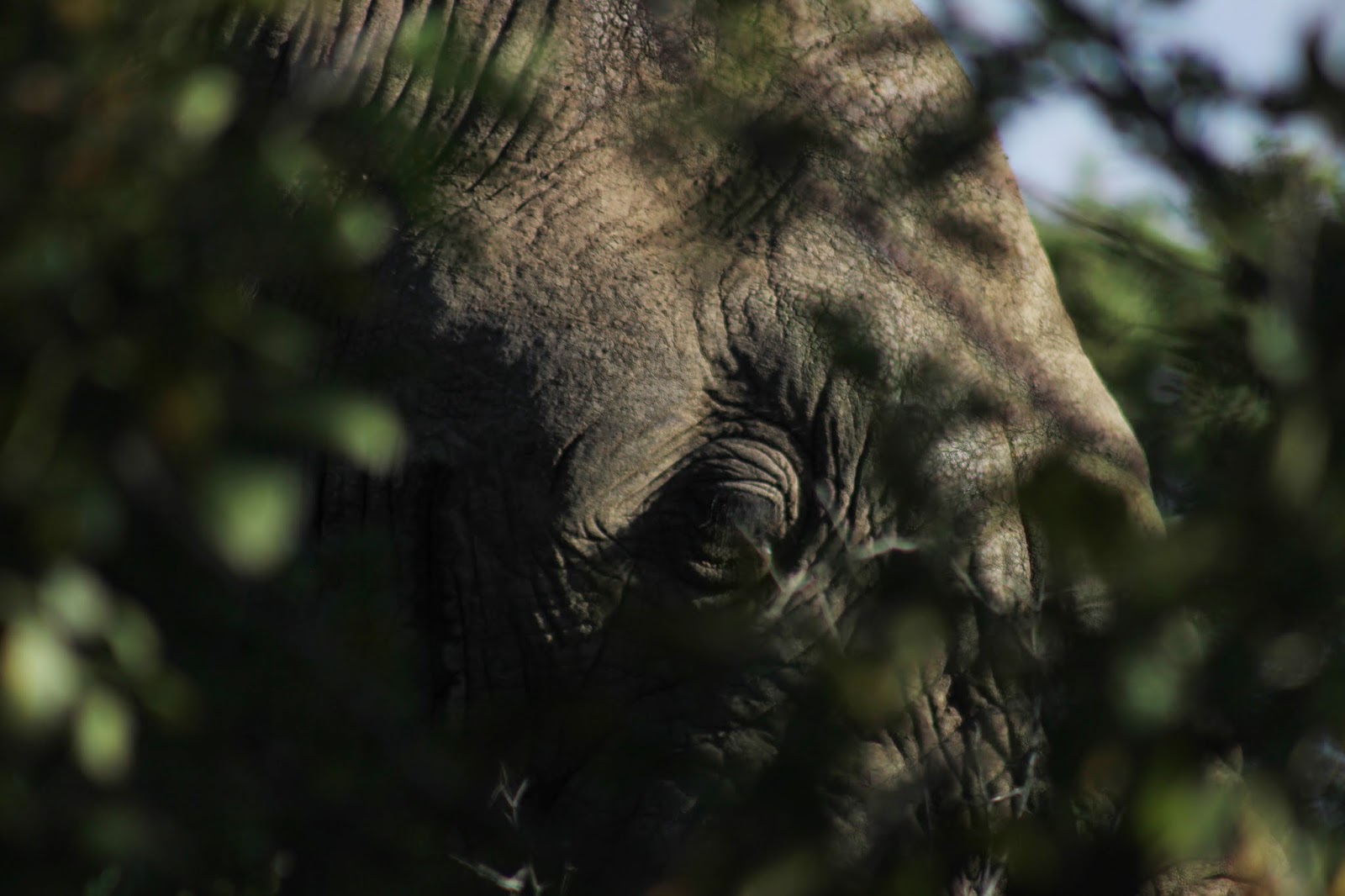Today was a
beautiful day. We were on the field early, as usual, to avoid the intolerable
midday heath and to enjoy the morning view of the hilly landscape, shining in soft,
orange light.
The sun was
just getting pleasantly warm while we walked through high lush grass,
responding crisply to our movements and letting its morning dew soak into our
clothes. The insects were having a blast, the air was buzzing and humming and every
butterfly that flew past was the most beautiful one I’ve ever seen. The birds were singing the year’s best autumn
tunes especially for us, and we had to stop and listen not to disturb soft
melodies with cracking debris under our feet. Around us, there were forbs that seemed to have just started blooming, even though African winter
is coming from around the corner. Their flowers were brightly painted with
pink, blue and yellow tans, together creating a bright rainbow curving around
the green shrubbery. The light chilly breeze was bringing smells of wild mint
and fresh flowers and we all stayed quiet and enjoyed having
our senses tickled with those nature’s treats. As if it was the last time we
were feeling, as if we knew we’re
about to be introduced to Mr Grim Reaper.
I was just
taking a photo of a big yellow-black freckled butterfly when I heard a deep
rumble sound. Still focusing on the butterfly and the camera, I said “oh, a
warthog” to the others, but didn’t get any reply. Lifting my eyes up from the camera,
I repeated the question “there’s a warthog close, right?”, aiming especially to
the guard. But when I saw his face I knew it was not a warthog. And by that
time the grunting became growling and suddenly turned into a loud, angry,
cat-like roar. At the same time, it was getting closer and filling us all with
indescribable terror.
It was a lion
and it was furious.
If there wasn’t
for the guard to repeat those too-many-times-heard “don’t run” words, the basic
instinct would take over and without standing a slightest chance of outrunning
the perfectly designed predator I would have not been writing this post or any
of the following ones. Instead, I fought a great battle with myself, a battle between
my instinct and my mind – the first thrusting my body into flight and the
second holding it back to stand still.
The lion ran
towards us, roaring, the guard cocked its rifle, took his aim. I stood behind,
looking away and – surprisingly – thinking who’s going to be eaten first.
But the lion
stopped, extremely close, yet far enough. Immediately, we started to back up,
slowly, carefully. We could still hear the growling and were shaking from the
dreadful attack for the next couple of meters, wishing to run, but forcing
our legs to walk slowly through the thick bush. It felt like forever before we reached our car.
We walked
into a lion’s den - literally. We came too close too soon. It must have had
kittens, or a fresh kill. Otherwise it wouldn’t charge so suddenly, without any
previous warning.
The reason
for us to be there was actually the lions themselves. We were trying to find a lion kill site, get
some clues about diet. Following a GPS with few days old lion location clusters,
we mostly find some remaining prey parts that tell us what the collared pride
ate few days ago, when the GPS data was received. And those few days are
crucial not to walk into the lions when they’re still eating.
However, you
can never be sure they’re actually gone. And that’s what we’ve proved today.


.jpg)
.jpg)
.jpg)

